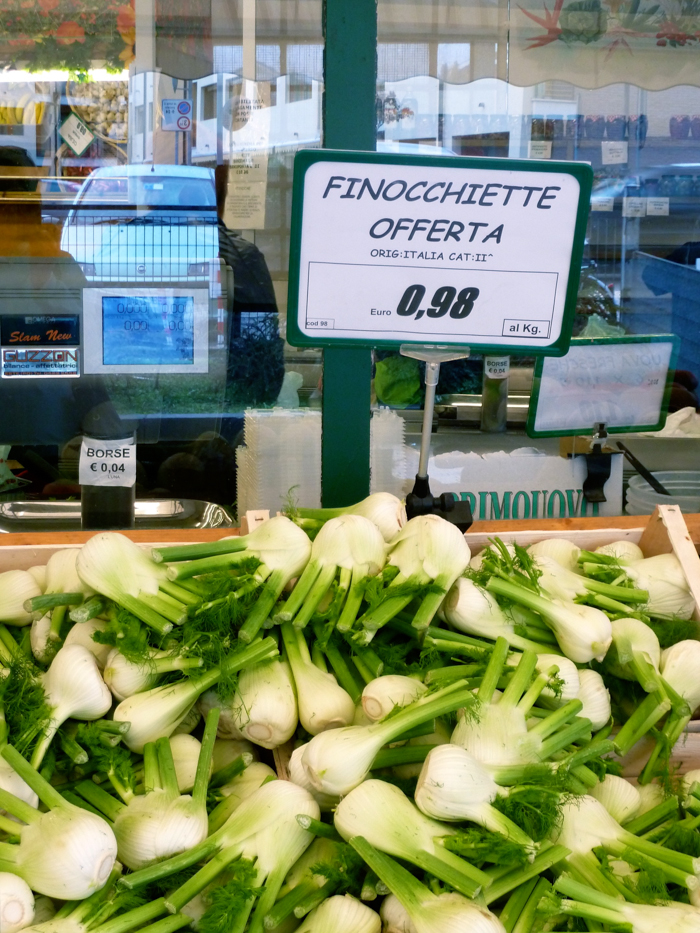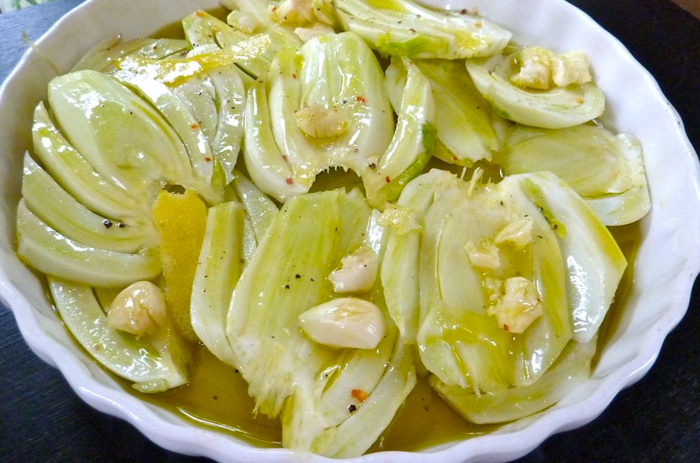Fennel, also known as Florence fennel, is hardy, perennial herb that is indigenous to the shores of the Mediterranean, but today is found many parts of the world, especially on dry soils near the sea-coast and on riverbanks.Known as the Florence fennel, it has a bulb as its base, with stalks emerging from the soil, carrying yellow flowers and distinctive feathery leaves. It has a mild anise-like flavor, but is more aromatic and sweeter. The bulbs are eaten as a vegetable, both raw and cooked. In Italian, fennel is finocchio. In North American supermarkets, including my local Shaws, it is often mislabeled as "anise".

Fennel has become quite common along roadsides, in pastures, and in other open sites in many areas, including northern Europe, the United States, southern Canada and in much of Asia and Australia. It propagates well by seed, and is considered an invasive species and a weed in Australia and the United States. We can attest to its presence in Italy - we quite often find it growing by the side of the road during our bike adventures.
The bulb, foliage, and seeds of the fennel plant are all used in cooking. Fennel pollen is the most potent form of fennel, but also the most expensive, and you will sometimes see it used as a garnish in upscale restaurants. Dried fennel seed is an aromatic, anise-flavored spice, brown or green in color when fresh, eventually turning a dull grey as it ages. The leaves are delicately flavored and similar in shape to those of dill, and with their lacy appearance make a very attractive garnish. The bulb is a crisp, hardy root vegetable and may be sauteed, stewed, braised, grilled, or eaten raw.

Fennel features prominently in Italian cuisine, where bulbs and fronds are used, both raw and cooked, in side dishes, salads, pastas, vegetable dishes and risottos. Fennel seed is a common ingredient in Italian sausages and meatballs and northern European rye breads.
Fennel’s distinctive anise flavor makes it a natural partner to fish, so it is a common ingredient in the seafood based cuisine of the Veneto coast. Throughout the region, it features prominently in the cuisine, from accompanying artichokes in the spring and summer (Finocchi e “Castraure” di Carciofini in Tegame) , to Finoci in Salata, a classic winter dish of the Vincentino. The seeds are often used to season the salume and sopressa of this region and those to the north - Trentino Alto-Adige.


